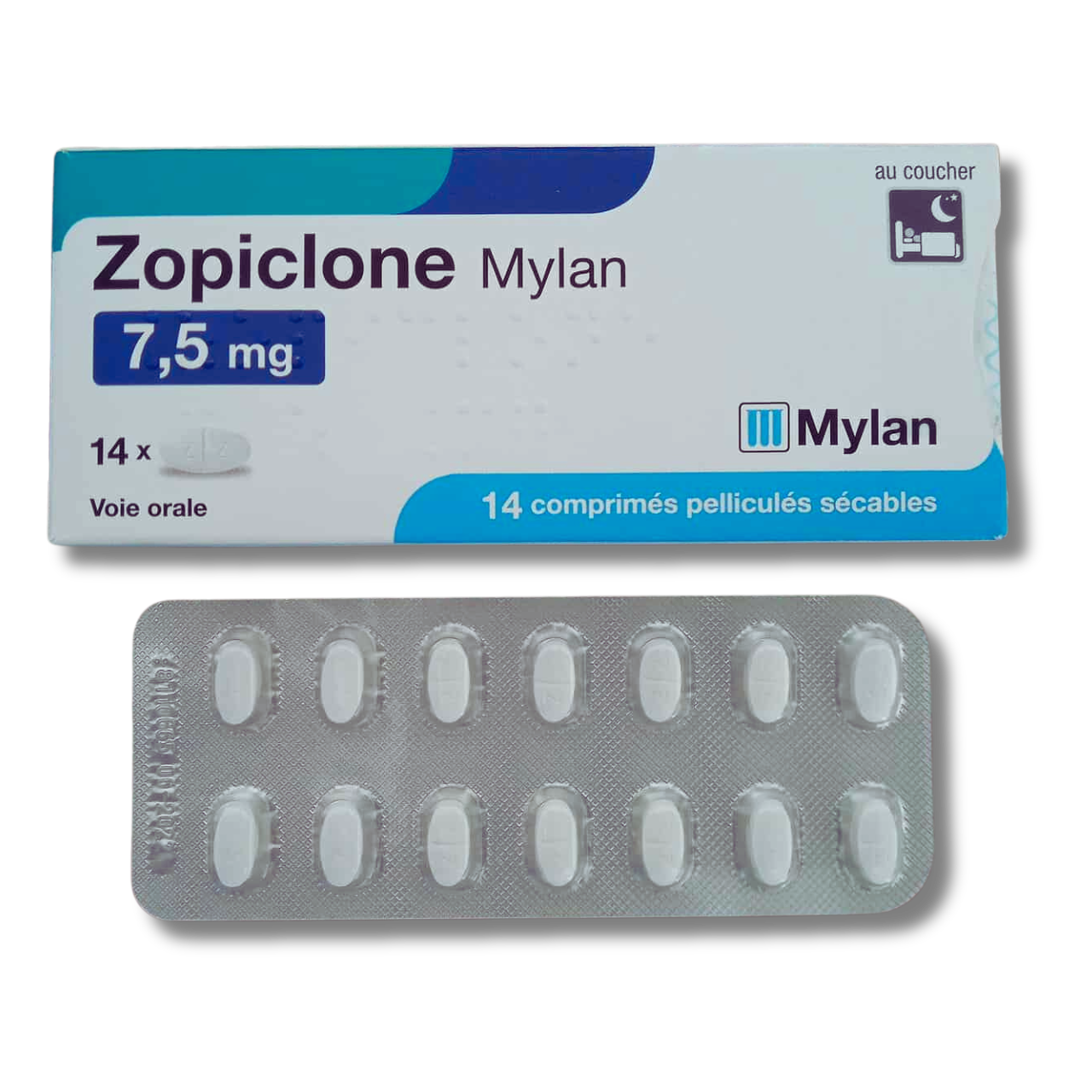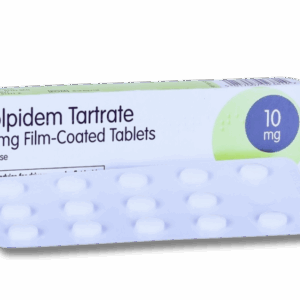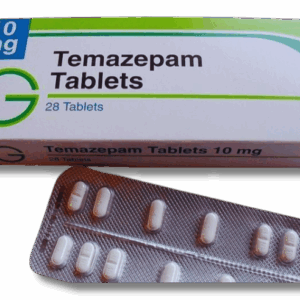Zopiclone
Original price was: £2.22.£1.22Current price is: £1.22.
Description
Zopiclone is a hypnotic medicine that helps people with short-term sleep problems, like insomnia. It calms the brain, making it easier to fall asleep and stay asleep.
Doctors often prescribe zopiclone to adults who can’t sleep, especially when other options haven’t helped. But it’s only for short-term use, since it can cause dependence or some unwanted effects.
People taking zopiclone should follow their doctor’s advice. The most common side effects are drowsiness or a dry mouth, so it’s good to keep those in mind.
Mechanism of Action and Medical Uses
Zopiclone is a non-benzodiazepine hypnotic that doctors often use as a sleeping pill for short-term insomnia. It falls under sedatives and Z-drugs because of its calming effect, but it’s not an anaesthetic.
How Zopiclone Works
Zopiclone affects the central nervous system by boosting the action of gamma-aminobutyric acid (GABA), the brain’s main calming chemical. It attaches to certain benzodiazepine receptors on the GABAA receptor complex.
This process lets more chloride ions flow into nerve cells, making them less likely to fire. While not a benzodiazepine, zopiclone hits similar binding sites, which gives it its hypnotic effects.
People usually notice the effects within an hour. The half-life is about 5 hours, so it doesn’t stick around forever.
Zopiclone typically causes fewer lingering effects in the morning, especially if you stick to the recommended dose. Still, if you misuse it, tolerance and dependence can creep up on you.
Approved Indications
Zopiclone is mainly approved for short-term insomnia in adults. That covers trouble falling asleep, waking up a lot at night, or waking up too early.
Doctors usually suggest zopiclone when non-drug treatments haven’t done the trick. It’s not for more than a few weeks at a time because of the risk of dependence.
It’s not approved as an anaesthetic or for other problems outside of sleep. Kids and long-term users should only take it if a specialist says so. The tablets should be taken right before heading to bed.
Comparisons and Related Medications
Zopiclone is a non-benzodiazepine hypnotic that doctors often prescribe for short-term insomnia. People sometimes compare it to benzodiazepines and other Z-drugs, and you can get it as a brand or generic.
Zopiclone vs Benzodiazepines
Zopiclone and benzodiazepines both help with sleep problems like insomnia, but their chemistry is different. Benzodiazepines (think diazepam or temazepam) target more brain receptors and help with sleep, anxiety, and even muscle spasms.
Zopiclone works mainly as a hypnotic, focusing on sleep with less effect on anxiety or muscles. Benzodiazepines usually come with a higher risk of dependence and withdrawal, even after short-term use.
Zopiclone, when used as prescribed, tends to have a lower potential for addiction and tolerance. Still, both can make you drowsy the next day, and mixing them with alcohol is a bad idea.
Zopiclone vs Other Z-Drugs
Z-drugs include zopiclone, zolpidem, and zaleplon. They all boost GABA, which calms the brain and helps with sleep.
Zopiclone sticks around in the body longer than zolpidem and zaleplon, so it can help people stay asleep through the night. The flip side? You might feel a “hangover” effect in the morning.
Zolpidem and zaleplon act quickly and clear out faster, so doctors sometimes pick them for people who can’t fall asleep but don’t have trouble staying asleep. All Z-drugs come with some risk of side effects and dependence, especially if you use them for more than a few weeks.
Branded and Generic Variants
You can get zopiclone as a brand name (like Imovane) or as a generic. The generic is usually cheaper and just as common in the UK and elsewhere.
Both versions come as tablets you swallow. Some companies make an oral solution or suspension for people who can’t swallow pills, but you usually have to special order that.
The active ingredient is the same in both branded and generic versions, so they work the same. The main differences are price and packaging, not how well the medicine works.
Dosage, Safety, and Side Effects
Doctors mainly prescribe zopiclone for short-term sleep problems like insomnia. Dose, side effects, and the risk of dependence matter a lot when you use this medicine.
Recommended Dosage and Administration
The standard adult dose is 7.5 mg just before bedtime. For older adults or people with liver, kidney, or breathing issues, doctors usually recommend 3.75 mg instead.
Only use zopiclone if you’ve got at least 7 to 8 hours available to sleep. If you don’t have a full night, you might end up drowsy or clumsy the next day.
Doctors don’t usually give zopiclone to kids. Don’t take it with alcohol—it makes the sedative effects stronger and riskier.
Common and Serious Adverse Effects
The most common side effects are drowsiness, a bitter or metallic taste, dry mouth, and sometimes headaches or nausea.
Some people notice confusion, dizziness, or forgetfulness. Rare but serious effects can pop up, like allergic reactions, sleepwalking, or doing things while not fully awake (like eating or even driving—yikes).
A table of common side effects:
| Side Effect | Frequency |
|---|---|
| Drowsiness | Common |
| Dry mouth | Common |
| Metallic taste | Common |
| Headaches | Sometimes |
| Nausea | Sometimes |
| Allergic reaction | Rare |
| Sleepwalking | Rare |
If you have serious symptoms like trouble breathing, swelling, or a rash, get medical help right away.
Dependence and Risk Management
Zopiclone is for short-term use only—usually a few days up to four weeks. Using it longer raises the risk of dependence, especially if you have a history of substance misuse or anxiety.
If you stop suddenly after long-term use, you might get withdrawal symptoms such as anxiety, restlessness, or trouble sleeping. Tapering the dose slowly with your doctor’s help is the way to go.
To avoid dependence, don’t share your medicine, and make sure your doctor reviews any repeat prescriptions closely.
Frequently Asked Questions
Zopiclone is usually prescribed short-term to help adults fall asleep faster and stay asleep longer. Here are some common questions about safety, dosing, and who should use it.
What is the recommended dosage for Zopiclone in adults?
Most adults get a 7.5 mg tablet to take right before bed. Sometimes doctors start at 3.75 mg, especially for certain groups. You’ll probably feel it working within an hour.
How does Zopiclone induce sleep in patients with insomnia?
Zopiclone changes brain chemicals that control sleep. It increases a calming neurotransmitter, which makes you drowsy and helps you drift off more easily.
Can Zopiclone be safely used on a nightly basis?
Zopiclone is only for short-term use. Doctors usually say to use it for a few days up to four weeks, tops. Nightly use for longer can cause dependence and make it less effective over time.
What are the potential adverse reactions associated with Zopiclone usage?
Common side effects include a bitter or metallic taste, dry mouth, and next-day drowsiness. Less common ones are confusion, memory issues, or allergic reactions. Some folks get dizziness or headaches too.
How should one proceed in the event of a Zopiclone overdose?
If you or someone else takes too much, get medical help right away. Watch for severe drowsiness, trouble breathing, or passing out. Call your doctor or head to the hospital as soon as possible.
Are there any specific considerations when prescribing Zopiclone to the elderly?
Elderly patients usually need a lower starting dose, around 3.75 mg. They’re more sensitive to this medication, and the risks—like confusion or falls—go up with age.
Doctors really need to keep a close eye on older adults when prescribing Zopiclone. It’s not something to take lightly, especially in this age group.



